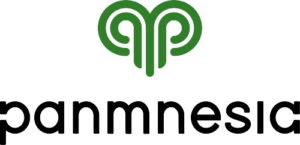
Can you share a brief introduction of Panmnesia?
Panmnesia is revolutionizing the world of Compute Express Link® (CXL®) technology by offering a comprehensive range of Intellectual Property (IP) solutions in hardware and software. Our unique offerings empower our customers to create specialized CXL products that deliver optimal performance and cost-effectiveness.
Our IPs serve as the foundational architecture for an array of memory-centric products within the CXL ecosystem, including memory controllers, expanders, and DIMM pools. In addition to memory-focused solutions, our IPs facilitate the development of diverse cache-coherent and heterogeneous computing systems that incorporate CXL-compatible processors, switches, custom GPUs, and AI processors. We extend support for specialized high-performance computing configurations, such as Processor-in-Memory (PIM) augmented by CXL, CXL-based SSDs, and Near-Data Processing (NDP) memory solutions.
At USENIX ATC 2022, we unveiled the world’s first full-system CXL framework, which integrates hardware elements, including CXL CPUs, switches, and DIMM pools, with a fully compatible software stack operating on a standard Linux OS.
Recently, at Flash Memory Summit 2023, we presented a multi-terabyte CXL system and shared a demonstration featuring Meta’s Deep Learning Recommendation Model (DLRM) running on an advanced version of our framework that received peer-reviewed acceptance at USENIX ATC. Watch the video demo here: https://www.youtube.com/watch?v=_v5zRxum4Ww.
What prompted Panmnesia to join the CXL Consortium?
Our objective is to develop a memory system that satisfies a broad range of user requirements. By openly releasing our technology and engaging in discussions, we can accelerate the achievement of this goal. It allows us to refine our development path through a variety of inputs, and broaden the beneficial influence of CXL by aiding in the collective advancement of technology. In line with this outlook, we have published multiple papers on CXL subjects at prestigious conferences like USENIX ATC, IEEE Micro, and ACM HotStorage.
Likewise, we became part of the CXL Consortium to engage in detailed discussions with stakeholders interested in CXL. As a Consortium member, we can refine our development focus based on interactions with fellow members and contribute to technological advancements by sharing our unique insights.
What expertise does Panmnesia bring to the Consortium?
We are at the forefront of CXL 3.0 IP development, completing our initial development in November 2022 by leveraging our long-standing efforts in memory sharing solutions. Therefore, we possess comprehensive knowledge regarding the challenges and solutions associated with key features of the CXL 3.0 Specification, such as memory sharing, port-based routing on multi-level switch architecture, and dynamic capacity devices.
Moreover, we identified specific CXL use cases by conducting empirical tests on a range of data center applications, including the acceleration of AI and large-scale machine learning models, using our CXL 3.0 full-system framework. In the context of these applications, we rigorously explored the most effective hardware configurations and CXL feature sets to enhance performance. We can bring this specialized knowledge and insights to help guide the development of the next generation CXL specification.
What is the biggest advantage of CXL Consortium membership? How does Panmnesia participate?
The CXL Consortium is comprised of leading companies in diverse sectors, including cloud computing, memory, and processors. As such, the collective expertise and knowledge base within the Consortium surpasses what any individual corporation could accumulate independently. The most significant benefit of becoming a CXL Consortium member is the opportunity for direct communication with other industry leaders and gain a better understanding of the broader industry’s requirements and challenges.
We actively contribute to the Consortium by disseminating our own key insights and findings among members to help members develop more pragmatic CXL-based solutions. We are prepared to share empirical data on CXL use cases and the limitations of the current CXL specifications as well as a complete CXL 3.0 full-system framework, including both hardware and software stacks, to other Consortium members. This enables them to gain hands-on experience with a real CXL 3.0 system and develop their own tailored hardware and software solutions for CXL.
What use cases do you feel will be ideal targets for CXL technology? Which market segments do you believe will benefit most from CXL?
The market segments poised to benefit most from CXL are hyperscalers and server providers focused on machine learning and high-performance computing or cloud computing systems. The adoption of CXL technology enables these entities to optimize profitability by reducing TCO (Total Cost of Ownership) while still delivering high performance.
Machine learning applications will benefit from a CXL-based disaggregated memory pool that enables a cost-effective solution for scaling memory resources in machine learning servers. It also enhances memory-sharing efficiency between host systems and accelerators. High-performance and cloud computing systems also stand to benefit from CXL technology, as they often host multiple user applications sharing abundant resources simultaneously. Allocating resources from a CXL-enabled memory pool based on each host’s specific needs can substantially lower the TCO.
Actually, there is already significant interest in our CXL 3.0 full-system framework among hyperscalers and data center operators, many of whom are either validating their CXL software via our framework or entering into collaboration discussions.
What does Panmnesia see as CXL’s impact within your industry?
We believe that CXL technology will be a transformative force within data centers and high-performance computing. Traditional memory disaggregation is limited due to latency issues in remote memory access. CXL effectively mitigates these challenges by optimizing coherence protocols, making memory disaggregation not only viable but also practical. CXL will also enable a truly composable architecture. It allows for the integration of various types of processors and coprocessors—such as CPUs, AI processors, DPUs, GPUs, and NPUs—into a shared resource pool, opening new avenues for resource disaggregation and further augmenting system efficiency and flexibility.
Given the transformative potential of CXL, we encourage companies to participate in the development of the CXL specification and proactively adapt to this emerging landscape. Utilizing our full-system CXL framework and CXL 3.0 hardware/software composable IPs offers an excellent starting point for organizations to develop their own customized CXL solutions.
